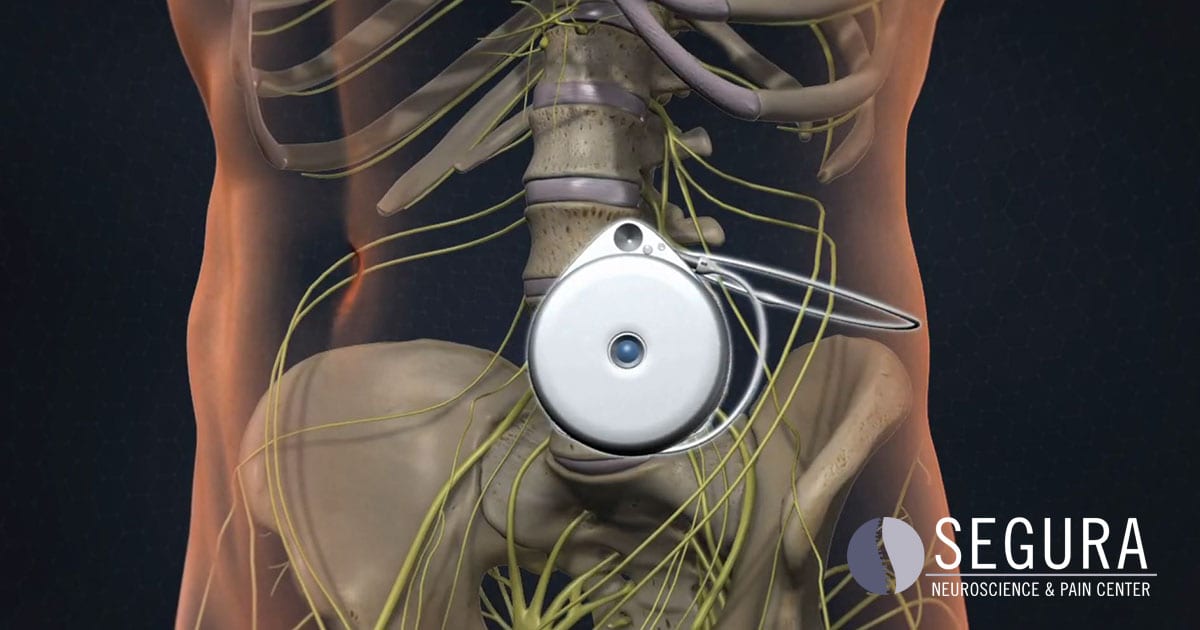A pain pump, also known as an intrathecal pump implant, offer patients medication directly at the source of pain. A small pump about the size of a hockey puck is implanted under the skin and stops pain signals from reaching the brain. Pain receptors in the vicinity of the spinal cord are able to interrupt any pain signal trying to go to the brain. Thus, one’s perception of pain is mitigated. Intrathecal implants have proven effective in treating chronic pain.
How is the pump implanted?
To ensure that the pain pump is effective, the patient will have a trial period before committing to the treatment long term. A trial procedure ensures that the patient responds positively and tolerates the system. During this procedure, the patient is given local anesthesia and the catheter is connected to a temporary pump. If the temporary implant is successful and the pain decreases, a permanent pump will be implanted.
For the permanent pump, general anesthesia is used as the temporary implant is taken out and the permanent one replaces it. A catheter is placed in the intrathecal space, which is the area around the spinal cord filled with fluid. The catheter is attached to a little pump generally implanted in the abdomen. The pump can be programmed to dispense a measured amount of medicine, to be determined by your specialist.
The medication can vary and may be more than a single type. Morphine and other opioids or pain relief are commonly prescribed as well as local anesthetics, which address neuropathic pain. Pumps are programmable for patient preference and are refilled once a month with an office visit, where the specialist refills the pump reservoir.
Who is a good candidate for a pain pump?
If other conservative treatments have not proven successful for treating pain, an intrathecal implant is recommended. Patients who would benefit from an implanted pump are those who have a dependency on pain medication, would not show improvement from another surgery, or who are not allergic to the pump medications. Also, pain pumps address conditions not treated effectively with surgery such as cancer pain, causalgia (pain caused by peripheral nerve injury), or chronic pancreatitis. They can also be used to treat lumbar degenerative disc disease, spasticity or muscle rigidity and spasms caused by stroke, cerebral palsy, or multiple sclerosis.
Considerations for this procedure
Immediately after surgery, patients might experience mild discomfort and swelling at the incision site for a few days. Over time, the catheter might move or become damaged from strenuous activity and may require repositioning or replacement. The intrathecal pump should last 3-5 years and is programmed with an external unit. Regular visits to the doctor are needed to refill the pump.
What are the benefits from this procedure?
Pain pumps offer consistent medication and therefore constant relief from pain. Since the medication is delivered right to the area of pain, less medication can be used than with oral medication. If the pump is no longer needed, this procedure is reversible.

